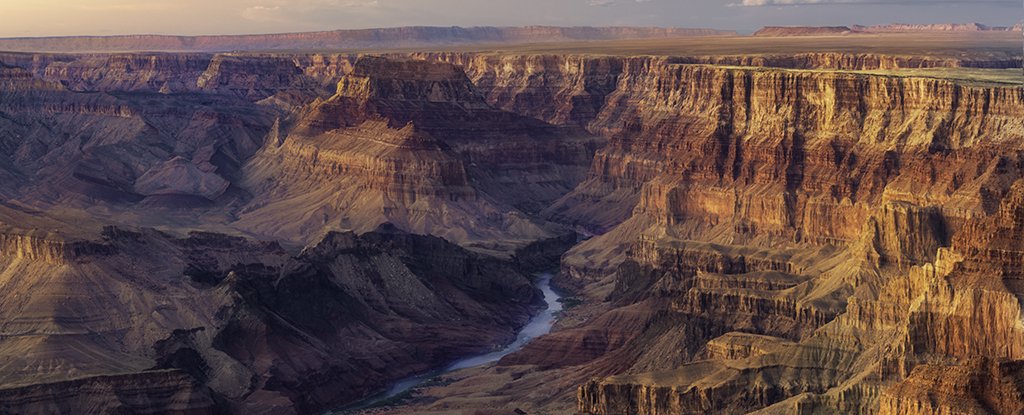Few geological mysteries are as perplexing as the ‘Great Unconformity‘ riddle at the Grand Canyon: More than a billion years of missing rock layers that for some reason weren’t deposited and stacked like the rest of the geological record. It’s as though those years never happened.
This strange gap was first spotted by geologist John Wesley Powell in 1869, as he journeyed down the Colorado River. Later, we would be able to date those layers. In some places, rocks dated to 1.4-1.8 billion years ago sit next to rocks that are just 520 million years old.
“There are beautiful lines,” says geologist Barra Peak from the University of Colorado Boulder. ”At the bottom, you can see very clearly that there are rocks that have been pushed together. Their layers are vertical. Then there’s a cutoff, and above that, you have these beautiful horizontal layers that form the buttes and peaks that you associate with the Grand Canyon.”
Where did the rest of these rocks go?
In a new study, scientists think they might have an explanation: They’re proposing that the geological history of the Grand Canyon is more complex than previously thought and that different parts of the site may have shifted in different ways across the millennia, causing some rock and sediment to get washed away to the ocean.
“We have new analytical methods in our lab that allow us to decipher the history in the missing window of time across the Great Unconformity,” says geologist Rebecca Flowers, also from the University of Colorado Boulder.
“We are doing this in the Grand Canyon and at other Great Unconformity localities across North America.”
These new methods primarily rely on thermochronology, which uses a series of chemical analysis techniques to measure the heat stored in rock when it was formed. This heat corresponds to the amount of pressure that geological formations were under.
The data collected by the researchers suggest there were a series of small but significant faulting events that account for the gaps in the geological record. These would have coincided with the violent breakup of the supercontinent Rodinia, roughly 633 to 750 million years ago, a tumultuous time in terms of Earth’s tectonics that may have meant rock layers didn’t settle in a more uniform way.
According to samples collected and analyzed by the team, the western half of the Grand Canyon has gone through very different geologic contortions compared to the eastern half, which is the one tourists will be most familiar with.
“It’s not a single block with the same temperature history,” says Peak.
For example, basement rock in the western half of the canyon seems to have risen to the surface some 700 million years ago; in the eastern half, the same layers of stone are buried under several kilometers of sediment.
The findings aren’t quite enough to close the mysterious case of the Great Unconformity once and for all, but they’re a good step forward – and the researchers think the same techniques can be applied at other sites in the US where similar kinds of geologic contortions have been observed.
What is not in doubt is the way the Grand Canyon continues to inspire awe: not just in its natural beauty but also in the way it charts the geological history of our planet across billions of years.
“There are just so many things there that aren’t present anywhere else,” says Peak. “It’s a really amazing natural lab.”
The research has been published in Geology.
